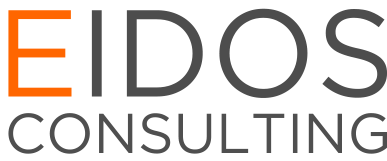For the past year, the main priority for trainers has been moving their face-to-face provision into an online delivery model. Tools such as Microsoft Teams, Zoom and Google Meet made it possible for trainers to pivot to a virtual face to face delivery, requiring them to quickly get to grips with screen sharing, managing breakout rooms, chats, and the mute/unmute button.
This simple move from physical to virtual face to face was an ideal short-term solution. It allowed trainers to deliver essentially the same course (with some tweaks) and gave employees an opportunity to stay connected with one another.
But what about as a longer-term solution? Virtual face to face overcomes the two primary issues faced with traditional face to face delivery: The overhead costs of facilitating face to face, and the need for travel. But it doesn’t overcome others. Synchronous training activities (where groups of delegates are engaging with learning at the same time) are by their nature still confined to a set time that may not suit all delegates and will require facilitation by the trainer. This still leaves companies with a fairly inflexible approach to learning that doesn’t necessarily meet the needs of the delegates and is limited by the availability of the trainer.
As trainers review the last year’s delivery, they should take time to consider the opportunities open to them to move away from fully synchronous delivery to a blended or asynchronous approach – Where learning can become truly flexible, undertaken at a time and place that suit the delegate, and where training can be scaled to any size required.
What do we mean by synchronous, asynchronous, and blended learning approaches? Our infographic looks at the benefits and limitations of these different approaches to learning delivery.
How do you decide to move from facilitated to non-facilitated?
The move from facilitated (synchronous) training to non-facilitated (asynchronous) training can be a big decision for an organisation, as it can take significant monetary and time investment. So how do you decide if and when this transition should happen?
Overcoming current limitations.
You will know if your current provision isn’t working. Perhaps you are struggling to keep up with the demand for training, or “zoom fatigue” is really making its presence known and is impacting on the learning that is taking place. If this is the case, then investment in a new learning approach may be a necessity.
Understand your future needs.
Development of resources can take time, so you need to consider what are the learning needs of the organisation in a year and assess whether your current provision will meet these needs. If new requirements are identified, would there be a benefit to delivering these in a different way?
Identifying opportunities.
The budget required for developing online resources can be significant, so understand your projected return on investment. Will upfront investment be balanced out by lower ongoing costs? Will new learning resources open up commercial opportunities for your business?
There are certainly benefits to moving at least some of your training provision away from traditional facilitated learning. If you think this could be the right move for your business, then make sure that you build a strong business case to be able to make this investment.
